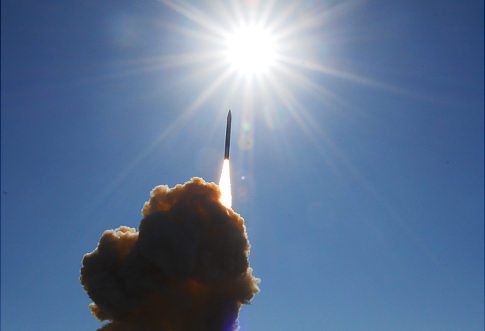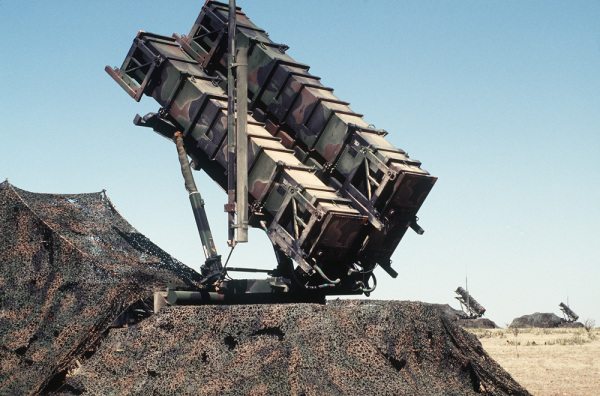North Korea launched a long-range rocket on Wednesday, in defiance of UN sanctions threats over what Pyongyang’s critics insist is a disguised ballistic missile test.
“It (the rocket) has been launched,” a South Korean defence ministry spokesman told AFP without elaborating further.
The Yonhap news agency, citing a government source, said the rocket had taken off from the Sohae satellite launch centre at 9:51 am (0051 GMT) and was immediately detected by navy vessels deployed by Seoul in the Yellow Sea.
There was no immediate report on the success of the launch, but the Japanese government said the missile had passed its southern island chain of Okinawa around 12 minutes after take-off.
“The missile that North Korea calls a satellite passed over Okinawa around 10:01 (am). We launched no interception,” it said.
Japan had deployed missile defence systems to intercept and destroy the rocket if it looked set to fall on its territory.
The United States had also deployed ships from its Pacific fleet equipped with ballistic missile defences.
Yonhap said the three-stage rocket’s first stage had separated as scheduled and splashed down in the sea off South Korea’s southwest coast.
In Seoul, President Lee Myung-Bak called an emergency meeting of his National Security Council to discuss the implications of the launch.
Japan’s government found the launch intolerable, chief government spokesman Osamu Fujimura said.
“It is extremely regrettable that North Korea went through with the launch despite our calls to exercise restraint,” he said.
The launch followed reports in the South Korean media and satellite imagery analysis by US experts that suggested the rocket had been removed from the launch pad to repair an apparent technical problem.
North Korea had originally provided a December 10-22 launch window, but extended that by a week on Monday when a “technical deficiency” was discovered in the first-stage control engine.
North Korea last attempted to launch its three-stage Unha-3 carrier in April, but the rocket exploded shortly after take-off.
A successful launch this time would carry profound security implications, marking a major advance in the North’s bid to mate an intercontinental ballistic missile (ICBM) capability with its nuclear weapons programme.
Washington and its allies insist the launch is a disguised ballistic missile test that violates UN resolutions triggered by Pyongyang’s two nuclear tests in 2006 and 2009.
In 2006 the Security Council imposed an embargo on arms and material for ballistic missiles and weapons of mass destruction. It also banned exports of luxury goods and named individuals and companies to be subject to a global assets freeze and travel ban.
In 2009, it imposed a ban on North Korea’s weapons exports and ordered all countries to search suspect shipments.
The United Nations and European Union had joined calls for Pyongyang to cancel the mission and warned of more sanctions if it pushed ahead.
According to Japanese reports, Japan, the United States and South Korea have agreed to demand the Security Council strengthen sanctions on North Korea to levels that match those on Iran.
That would include increasing the list of financial institutions, entities and individuals subject to asset freezes.
The North’s decision to launch the rocket in winter has led analysts to suggest a political imperative behind the timing, which may have overruled technical considerations.
New leader Kim Jong-Un was believed to be extremely keen that the launch fell around the first anniversary of the death of his father and former leader Kim Jong-Il on December 17.
Russia had joined the calls for Pyongyang to cancel the mission, while China, North Korea’s sole major ally and its biggest trade partner and aid provider, had expressed concern.











